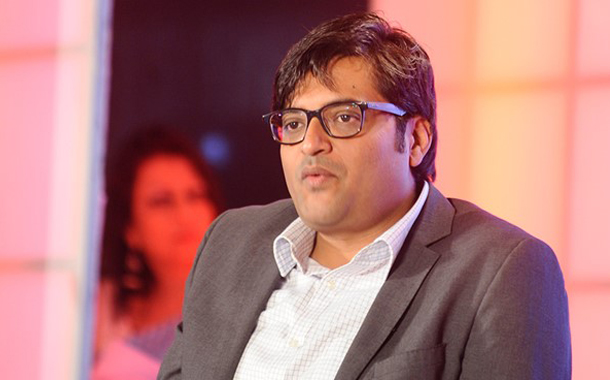The Indian news industry has changed in unimaginable ways. As we take footsteps into 2017, I believe the Indian news genre is on the brink of conquering its next wave of disruption. Disruption which is positive, disruption which is a symbol of change, disruption which is an emblem of our progress and our fearless risk, and disruption which has become a mascot of the Indian news evolution over the last two decades.
After spending the last 21 years working in the English news media industry, it inspires faith in me that more than 260 million Indians can now speak and comprehend the English language and that the country has gone from a 12% literacy rate in 1947 to 74.06% as per the 2011 census. These numbers are growing at a time when there are over 167 million households with television sets. To me, this not only means that the power of the television news industry is more than ever, but also that English is now joining the regional languages to become an Indian language which in itself is an intensely energising idea for us as journalists in today’s times.
Citizen first: a common goal
With literacy, especially in terms of the understanding of the English language on the rise, the fact is that at the end of 2016, the evolving landscape of the news genre in India is being sculpted not solely by those in the newsroom but also by citizens themselves. And the recognition of this one fact — that is, making the citizen the heart and focus — has been the biggest game-changer in the English news industry.
Putting the citizen’s concern, the common man’s welfare and pure untainted justice to every Indian first has been at the heart of the journalism that we have done in the last decade — whether it was the Right to Pray campaign or it was the campaign in the aftermath of Nirbhaya — it was the Indian news media that fearlessly made it their resolve to put their cameras on the citizen’s simmering anger and use their combined voices to fight for change even if it came at the challenge of taking on religious traditions, lawmakers and even making enough noise for courtrooms to reopen in some cases.
This journey of the last decade in Indian journalism ridden with unflinching determination to put the citizen first has, I believe, started to uproot the news media from the days when journalism was restricted to sitting on cosy cushions in the corridors of power.
Advertising will follow
For too long, we have been a spectator to news creation which happens with a reporter standing outside the Parliament house. Now the time has come, I believe, to take the news capital out of the national capital and let it spread its wings and roots into every nook and cranny of the country. Because it is time Indian news media represents the entire 3,287,263 kilometres of India and every one of those 1.3 billion stories we encompass instead of just a clique residing in a part of the national capital.
With this change in mindset and conceptual shakeup of the status-quo in content creation, advertising will follow as we make good and dynamic content the fulcrum of our newsrooms. Advertising booms only proportionately to winning the trust of the viewer.
Moving away from being on the brink of a shakeup of content creation, the other big change as we look into 2017 is the marriage of digital and television platforms, primarily because of changing demographics along with the strong emergence of a multi-platform consumption pattern.
As reading the morning newspaper has become more of an activity on digital screens rather than the physical black and white paper form, the possibilities of content creation as well as content funnelling are umpteen. As print dabbles with digitising, television stands on the verge of revamping the digital space by using the medium beyond just a mirror to its primary screen, and instead becoming home to a space which functions as a pipe in the larger purpose of content creation, delivery and consumption.
Future of news
With 53.7% of the Indian population under 24 years of age, with the country home to 220 million smartphone users, with India becoming a habitat to a fast-growing 462 million internet users and, as vitally, with 3G and 4G users tripling in the last 24 months — the linkage of digital and television, packaged to the consumer’s needs and wants, is the future of news in a country which is growing younger.
This cocktail of growing literacy, the citizen being the focus, good content being the driver of social change and news agenda, the impeding pipe between digital and television and the physical uprooting of the news centre from the national capital — will all come together if we restore our faith in a single pursuit: that is, an independent media which has the fearlessness to be answerable to none but itself and be regulated by itself in a way that the dogged pursuit of the story is the only compulsion it has.
Once we reach there, and I believe 2017 is a solid place to start, we would have a second wave of disruption redefining our system once again — a redefinition that will span far beyond the borders of India because in the next three to four years, it is this disruption which will see us leap into taking this Indian home-carved model and going global.
As we enter 2017, I don’t see any reason why we won’t.
Arnab Goswami
Founder, ‘Republic’
















